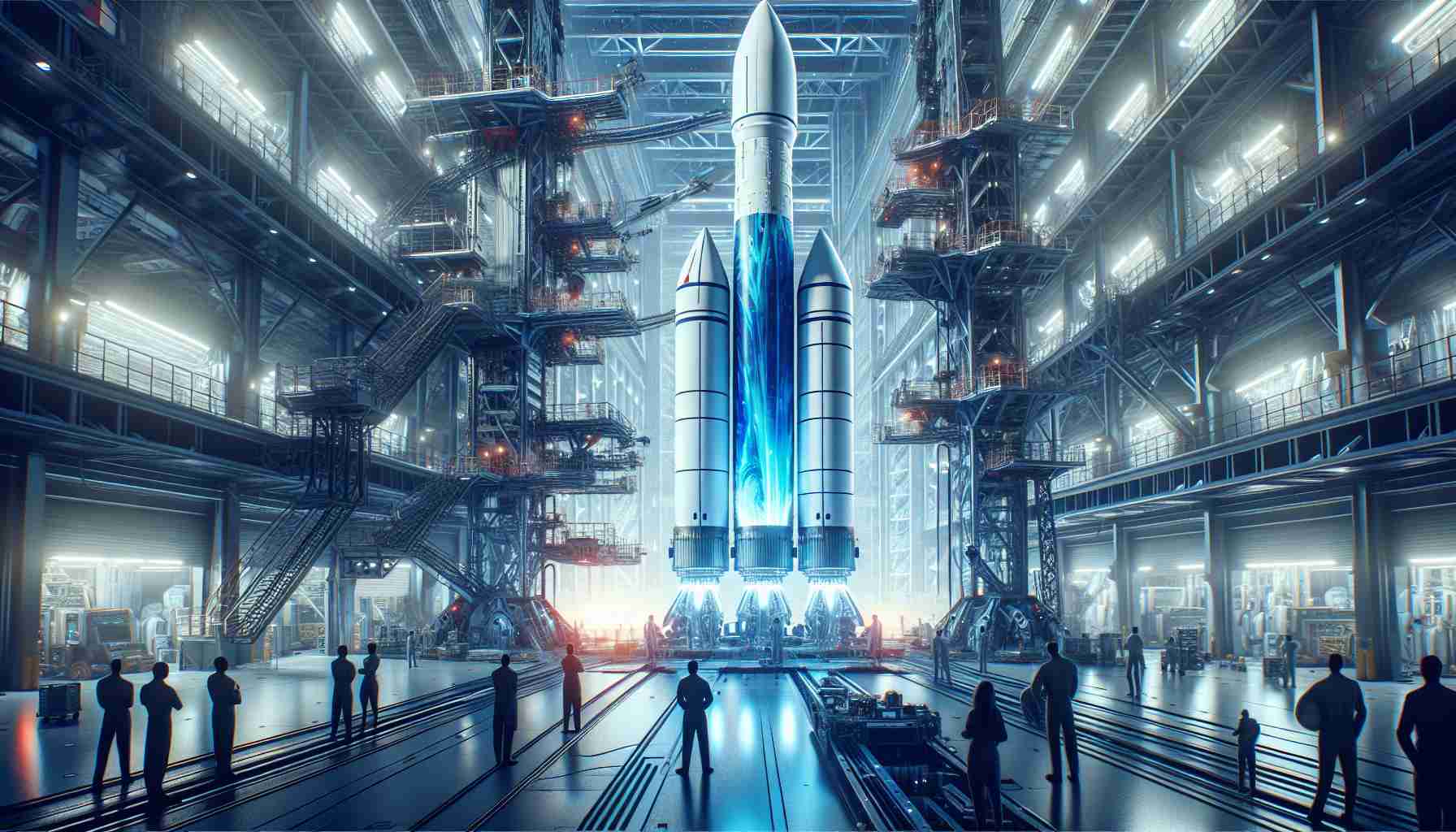A Revolutionary Moment in Rocketry: Witness an extraordinary moment as cutting-edge robotic mechanisms delicately secure a towering rocket stage, signifying a new era in space exploration and technology.
The Tremendous Leap: Glimpse at the groundbreaking advancement in rocket stage handling, as state-of-the-art robotic arms deftly cradle the colossal booster during a historic test flight, marking a monumental achievement for the aerospace industry.
Unveiling the Future: Experience a pivotal moment as innovative engineering solutions successfully guide the massive rocket stage back to Earth with precision and finesse, showcasing the remarkable progress in reusable rocket technology.
Achieving Astounding Feats: Delve into the realm of technological excellence as the Super Heavy booster, propelled by powerful engines, embarks on a journey of unparalleled magnitude, setting the stage for future missions to explore distant celestial bodies.
Pushing Boundaries: Embrace the spirit of innovation as SpaceX pioneers daring techniques to revolutionize space travel, paving the way for a new chapter in human exploration beyond Earth’s confines.
Embracing the Future of Space: Marvel at the intricate dance of technology and science as SpaceX engineers achieve a flawless catch, underscoring the immense capabilities of human ingenuity in conquering the challenges of space exploration.
Additional Facts:
– SpaceX, founded by Elon Musk, has been at the forefront of revolutionizing the space industry with its innovative approaches to rocket design and operations.
– NASA has also been exploring new techniques in rocket stage handling, such as using autonomous drones to capture payloads in mid-air.
– Other companies like Blue Origin and Rocket Lab are also investing in developing advanced technologies for rocket stage recovery and reuse.
Key Questions:
1. How do innovative techniques in rocket stage handling impact the cost and sustainability of space missions?
2. What are the safety considerations associated with using robotic systems for handling rocket stages?
3. How do these advancements in rocket technology contribute to the exploration of Mars and other celestial bodies?
Key Challenges:
– Ensuring the reliability and precision of robotic systems in handling delicate and expensive rocket components.
– Overcoming regulatory hurdles and safety standards to implement new techniques in the aerospace industry.
– Balancing the trade-offs between reusability and performance optimization in rocket stage design and handling.
Advantages:
– Increased cost-effectiveness through the reuse of rocket stages, reducing the overall expense of space missions.
– Improved safety for astronauts and mission payloads by implementing advanced robotic handling techniques.
– Enhanced environmental sustainability by minimizing the production of new rocket components for each launch.
Disadvantages:
– Initial investment costs for developing and implementing innovative rocket handling technologies can be substantial.
– Maintenance and upkeep of complex robotic systems may require specialized expertise and resources.
– The integration of new techniques into existing launch infrastructure may pose logistical challenges and necessitate extensive modifications.
Related Links:
– SpaceX Official Website
– NASA Official Website
– Blue Origin Official Website



